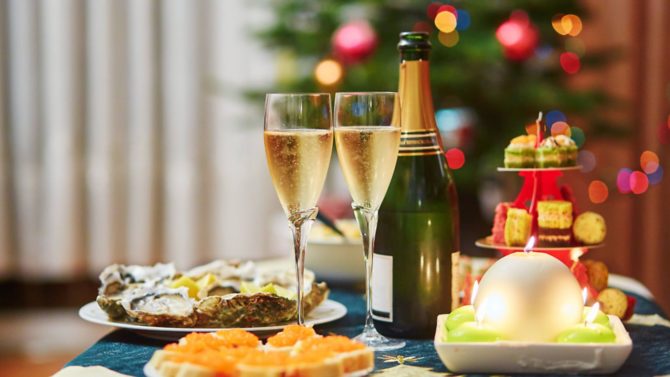Recipe for success: best foodie property locations in France

Discover the best foodie locations to buy a French property

The south-west of France is famed for its food and quite rightly too. The region is blessed with the highest quality ingredients and a long history of making the very best of them.
Duck and goose, walnuts and hazelnuts, melons, tomatoes and plums – all are plentiful throughout the region. Some have seasonal peaks; others are available year-round in their raw form or preserved to be enjoyed throughout the year. Whatever your taste, there are worse reasons to choose a department than to be in close proximity to some of your favourite foods.
CHARENTE-MARITIME

As you would expect, Charente-Maritime is seafood heaven and anyone who enjoys mussels, crab, razor clams and whelks will have a field day.
In particular, the series of islands off the coast near La Rochelle (including the Île d’Oleron and Île de Ré) are famed for their oysters. Traditional advice is that if there is an ‘R’ in the month it’s safe to eat oysters. That holds true for the wild gathered shellfish, but farmed oysters are good all year round. If you haven’t been able to bring yourself to try oysters before, I highly recommend starting with them grilled.
GIRONDE

There are a few specialities of the Gironde, one very every-day, one an occasional treat and one absolutely for high days and holidays. Marmande is the tomato hotspot of France and even has its own tomato type. Marmande tomatoes are a heritage type of beefsteak tomato – huge, juicy and with an irregular ‘cushion’ shape. They are at their peak, of course, in summer, but if you buy them when they are cheap and plentiful there are lots of ways to enjoy them through the winter. Pasta sauces and soups can be bottled or frozen. Halve and roast the tomatoes with garlic and a little seasoning and then freeze to use in casseroles or on pizzas.
If you visit Bordeaux, be sure to drop in at one of the Baillardran bakeries that specialise in cannelés. These sticky, rum and vanilla-flavoured cakes are dangerously moreish but have to be sampled. At the other end of the scale is Gironde caviar. At the beginning of the 20th century, Russian immigrants arrived near Bordeaux and encouraged the local fishermen to harvest sturgeon for their eggs rather than their meat. Caviar is still produced in the region and costs from €35 for 20g.
AUDE

When winter draws on there is one go-to recipe that steals the show. Cassoulet is the ultimate cold-weather dish, guaranteed to feed the stomach and the soul.
A rich mix of beans, duck or goose, Toulouse sausage, pork and garlic comes to the table crowned with a dark crust of parsley and breadcrumbs. Great fuel for a brisk and chilly winter walk!
DORDOGNE

Truffles, duck and walnuts are the backbone of Dordogne’s foodie heaven.
Sprinkled on salads, baked into chocolatey tarts, coated with caramel or chocolate in the local chocolaterie, or chopped into a paté, walnuts cover all the bases, sweet and savoury. Buy a house in the Dordogne and you are likely never to have to buy walnuts again. I f you don’t have a tree yourself, your neighbours almost certainly will and sharing surplus is the name of the neighbourly game.
AVEYRON

Famed for its craggy landscape and deep gorges, Aveyron is a feast for the eyes. One month you could be swimming in the River Lot or hiking through beautiful riverside villages. The next you could be skiing on the volcanic and granitic Aubrac plateau, which looms some 1,000m above the Lot valley. Aveyron has charming food as well. One of its acclaimed chefs, Sébastien Bras, actually asked to be stripped of his three Michelin stars so that he could focus on his food instead of his gastronomic reputation.
Chilly days call for carbs and what could be better than the hearty mix of mashed potato, cream, cheese, butter and garlic known as Aligot?
TARN-ET-GARONNE
This is the land of tarts. Apple tarts in particular and one special apple tart called a tourtière. A pastry base is filled with apples and rum with ruffled layers of crispy filo on top. The wife of the maire of Tournon d’Agenais makes absolutely the best version and there is a whole day in the middle of August in celebration of the tourtière where you can watch a demonstration of the making and buy the results.
Another real speciality is a grape called Chasselas. Small, round, golden and honey-sweet, these grapes are a table variety also used for wine. Chicken cooked with Chasselas is a delicious treat. If you can’t find Chasselas, look instead for Muscat grapes.
Julie Savill is Marketing Director at Beaux Villages estate agency in France
DON’T MISS
Five festive French properties to get you in the mood for Christmas
Protect your French property budget from currency fluctuations after Brexit
Share to: Facebook Twitter LinkedIn Email


